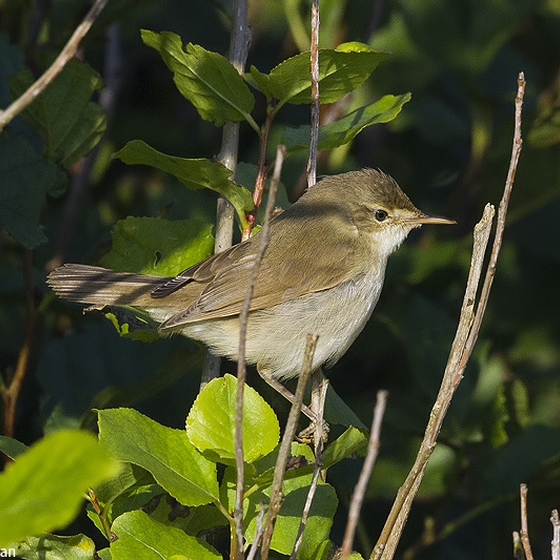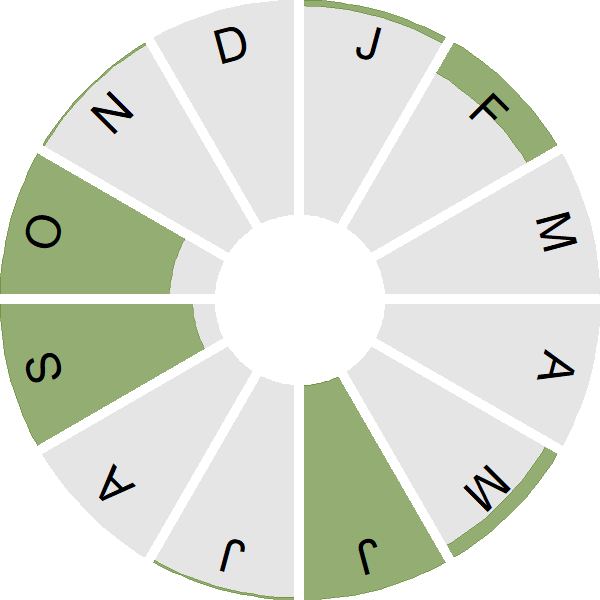Blyth's Reed Warbler

Introduction
Closely resembling a Reed Warbler and best identified by its song, Blyth's Reed Warbler breeds in scrubby habitats, from Finland east to central Russia and Mongolia.
Wintering in India, Bangladesh and Myanmar, Blyth's Reed Warbler is a scarce visitor to Britain. Most records fall in September or October, and about half of these come from the Northern Isles. Following breeding range expansion in Europe, and increasing numbers of singing males in spring, a pair successfully bred in Scotland in 2024.

Key Stats
Status and Trends
Conservation Status
Population Size
Population Change
Population trends of this scarce species are not routinely monitored.
Distribution
This species is a rare vagrant and was recorded during Bird Atlas 2007–11 as shown on the map.
Occupied 10-km squares in UK
or view it on Bird Atlas Mapstore.
or view it on Bird Atlas Mapstore.
European Distribution Map
Distribution Change
This vagrant is too rarely reported to map distribution change.
Seasonality
Blyth's Reed Warbler is a rare vagrant. In recent years some males have held territory in late spring but most birds are recorded in September and October.
Weekly pattern of occurrence
The graph shows when the species is present in the UK, with taller bars indicating a higher likelihood of encountering the species in appropriate regions and habitats.

Movement
Britain & Ireland movement
Foreign locations of birds ringed or recovered in Britain & Ireland
Dots show the foreign destinations of birds ringed in Britain & Ireland, and the origins of birds ringed overseas that were subsequently recaptured, resighted or found dead in Britain & Ireland. Dot colours indicate the time of year that the species was present at the location.
- Winter (Nov-Feb)
- Spring (Mar-Apr)
- Summer (May-Jul)
- Autumn (Aug-Oct)

European movements
EuroBirdPortal uses birdwatcher's records, such as those logged in BirdTrack to map the flows of birds as they arrive and depart Europe. See maps for this species here.
The Eurasian-African Migration Atlas shows movements of individual birds ringed or recovered in Europe. See maps for this species here.
Biology
Survival and Longevity
Survival is shown as the proportion of birds surviving from one year to the next and is derived from bird ringing data. It can also be used to estimate how long birds typically live.
View number ringed each year in the Online Ringing Report.
Classification, names and codes
Classification and Codes
- Order: Passeriformes
- Family: Acrocephalidae
- Scientific name: Acrocephalus dumetorum
- Authority: Blyth, 1849
- BTO 2-letter code: DU
- BTO 5-letter code: BLRWA
- Euring code number: 12480
Alternate species names
- Catalan: boscarla dels matolls
- Czech: rákosník pokrovní
- Danish: Buskrørsanger
- Dutch: Struikrietzanger
- Estonian: aed-roolind
- Finnish: viitakerttunen
- French: Rousserolle des buissons
- German: Buschrohrsänger
- Hungarian: berki nádiposzáta
- Icelandic: Elrisöngvari
- Irish: Ceolaire Blyth
- Italian: Cannaiola di Blyth
- Latvian: krumu kaukis
- Lithuanian: sodine nendrinuke
- Norwegian: Busksanger
- Polish: zaroslówka
- Portuguese: felosa-das-moitas
- Slovak: trsteniarik krovinový
- Slovenian: robidna trstnica
- Spanish: Carricero de Blyth
- Swedish: busksångare
- Welsh: Telor Cyrs Blyth

